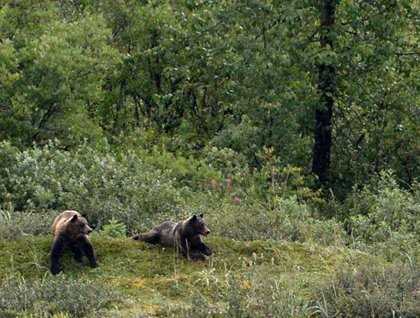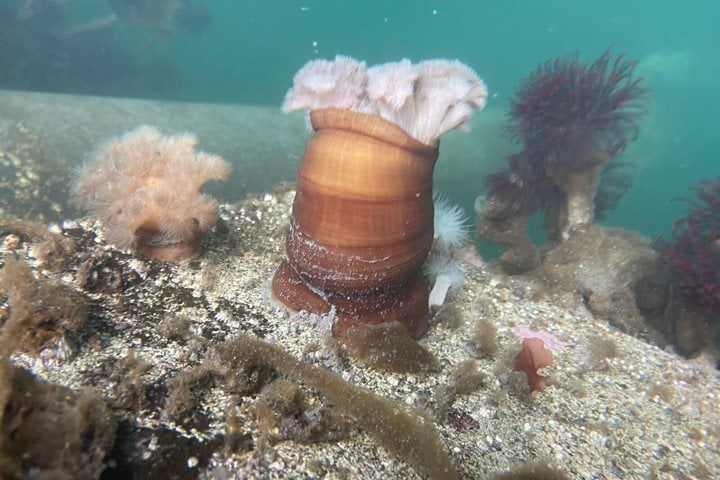A light sprinkle and low clouds filled our distant views, setting a somber mood. After leaving Bartlett Cove at the entrance to the national park, we turned north and made or way “up bay.” Those awaking early were rewarded by light interwoven mist within dark silhouetted ridges.
As we approached our first wildlife hotspot, we heard low growls of northern sea lions and saw their brown bodies slowly writhing between each other or lying side-by-side like carefully placed logs. They had hauled out on the first of a series of progressively larger marble islands. These were once coral atolls around volcanic islands transported here from equatorial places by the geologic forces of plate tectonics. That started over 400 million years ago, long before the sea lion growls drifted through the air. Today hundreds of kittiwakes, gulls, guillemots, murres, and cormorants covered these islands. Yellow sprigs of feathers ridiculously large and colorful bills decorated the heads of the endearing puffins. High-pitched barking took us all by surprise, because it came from a California sea lion. They are occasionally found here but are far from their more southern range.
A stop at steep gray rock walls and a bit of searching gave us great views of three mountain goats surrounded by high cliffs. These shaggy creatures seek out sites that provide safety due to the limited climbing ability of predators like wolves and bears.
We continued on until two brown bears were spotted feeding on clumps of soapberries. One sprawled on its belly and munched on other low-growing berries like a tired dog might feed from a bowl. It was the berries that consumed them and visa versa.
Luck was with us as we approached Margerie Glacier. Not only was the sun shining brilliantly, but a slab of the glacier calved off within minutes of our arrival. Harbor seals eyed us from atop a flat piece of ice, and black-legged kittiwakes flew about over the pale turquoise sea. This glacial water gained its color from finely ground rocks that had been flushed from beneath the ice. The massive Grand Pacific Glacier flowed out of nearby Canada and extended across the fiord to the north. It looked like mounds of dirt rather than the ice that lay just a few feet below its surface.
We turned “down bay” for a few miles and turned into Johns Hopkins Inlet for a look at the really blue Lamplough. This tidewater glacier is reached by seawater only on high tides but has still kept its cliff-like face. We continued onto Jaw Point for an almost unbelievable view up a fjord with rock walls that shot upwards into rugged mountaintops and the wall of ice known as the Johns Hopkins Glacier.
As we finished dinner we again reached Bartlett Cove. This is a great place to get a little exercise, so some walked a trail that passed by a beautiful pond. Others made their way to the lodge to visit a small park museum and experience a bit of off-ship relaxing. It was a great and mostly dry day in a spectacular place.







